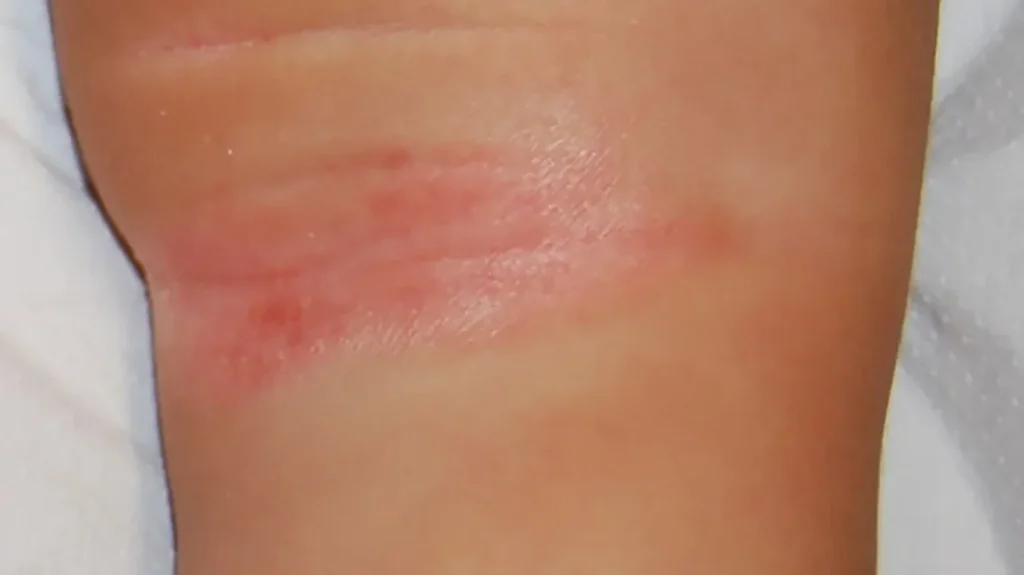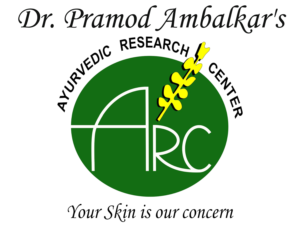- drambalkar@yahoo.co.in
- Mon - Sunday 10:00 AM - 02:00 PM
Inverse Psoriasis Treatment
What is Inverse Psoriasis?

Inverse psoriasis, also known as intertriginous psoriasis, is a type of psoriasis that affects skin folds and areas of the body where skin rubs against skin, such as the armpits, groin, and under the breasts. Inverse psoriasis appears as smooth, shiny, red, and inflamed patches of skin that may be itchy or painful. Unlike plaque psoriasis, which presents as scaly, raised patches of skin, inverse psoriasis does not usually have scales. The areas affected by inverse psoriasis are also more susceptible to fungal infections and can be aggravated by sweating and friction. Inverse psoriasis can be challenging to diagnose and treat, and a healthcare provider may need to perform a skin biopsy to confirm the diagnosis. Inverse psoriasis treatment options may include topical corticosteroids, calcineurin inhibitors, and phototherapy, as well as lifestyle modifications such as keeping the affected areas dry and avoiding tight-fitting clothing. It is crucial to consult with a skin specialist doctor or dermatologist for an accurate diagnosis and a tailored plan for inverse psoriasis natural treatment in Vasai, Mumbai. They can provide guidance on suitable psoriasis inverse treatment options and offer advice on effectively managing the condition.
Symptoms of Inverse Psoriasis
Inverse psoriasis is a type of psoriasis that affects the skin folds, such as the armpits, groin, and buttocks.
Here are some common symptoms of inverse psoriasis:
Smooth, red, and shiny patches of skin: These patches may appear inflamed and irritated, but they don’t have the thick, scaly appearance of other types of psoriasis.
Soreness and itching: Inverse psoriasis can cause discomfort and itching in the affected areas, which can make it difficult to sleep or carry out daily activities.
Pain: Sometimes, inverse psoriasis can cause pain, especially if the skin cracks or bleeds.
Moisture: Because inverse psoriasis affects skin folds, the areas may be moist and prone to fungal infections.
Discomfort during sexual activity: If inverse psoriasis affects the genital area, it can cause pain and discomfort during sexual activity.
It is important to consult with a best skin ayurvedic doctor or dermatologist to determine the most suitable plan for inverse psoriasis cure based on individual needs. They can provide expert guidance on the best inverse psoriasis treatment in Mumbai, taking into account the severity of the condition and an individual’s specific circumstances.
Causes of Inverse Psoriasis
The exact causes of inverse psoriasis are not fully understood, but it is believed to be an autoimmune condition, where the immune system attacks healthy skin cells by mistake.
Here are some factors that may contribute to the development of inverse psoriasis:
Genetics: Like other types of psoriasis, inverse psoriasis may have a genetic component. If someone in your family has psoriasis, you may be more likely to develop it.
Obesity: Inverse psoriasis is more common in people who are overweight or obese, likely due to the increased friction and sweating in skin folds.
Hormones: Hormonal changes, such as those that occur during puberty or menopause, may trigger the onset of inverse psoriasis.
Medications: Some medications, such as lithium and beta-blockers, can trigger or exacerbate psoriasis symptoms.
Stress: Stress and anxiety can weaken the immune system and trigger or worsen psoriasis symptoms.
Fungal infections: Fungal infections, such as yeast infections, can develop in skin folds and exacerbate inverse psoriasis symptoms.
Risk of Inverse Psoriasis
Anyone can develop inverse psoriasis, but certain factors may increase your risk, including:
Family history: If you have a family member with psoriasis, you are at a higher risk of developing it yourself.
Obesity: Being overweight or obese can increase your risk of developing inverse psoriasis, likely due to the increased friction and sweating in skin folds.
Age: Inverse psoriasis can develop at any age, but it is most commonly diagnosed in people between the ages of 20 and 60.
Gender: Inverse psoriasis affects both men and women, but it may be more common in women.
Medical conditions: People with certain medical conditions, such as HIV/AIDS or type 2 diabetes, may be at an increased risk of developing inverse psoriasis.
Medications: Some medications, such as lithium and beta-blockers, can trigger or exacerbate psoriasis symptoms, including inverse psoriasis.
Ayurvedic Treatment for Inverse Psoriasis
To prevent the spread of inverse psoriasis, there are several steps you can take. Keep the affected areas clean, dry, and free from irritation. Avoid tight clothing and use gentle, fragrance-free products. Minimize triggers and follow a prescribed treatment plan. Regularly consult with a professional ayurvedic skin doctor for monitoring and adjustments.
Inverse psoriasis is less common than other forms of psoriasis, affecting around 2-6% of people with psoriasis. It primarily occurs in skin folds like the armpits, groin, and under the breasts. Accurate diagnosis and proper management are important, as it can resemble other skin conditions. Consulting a healthcare professional is advised for a correct diagnosis and suitable inverse psoriasis treatment.
When you have inverse psoriasis, there are certain things you should avoid to prevent aggravating the condition. To manage inverse psoriasis, avoid scratching, use gentle cleansers, wear loose-fitting clothes, prevent excessive sweating, manage stress, and consult a best ayurvedic skin doctor for appropriate inverse psoriasis treatment.
To prevent the spread of inverse psoriasis, there are several steps you can take. Firstly, avoid scratching or rubbing the affected areas, Keep the affected areas clean and dry to minimize moisture and friction. Opt for loose-fitting clothing made of breathable fabrics to reduce irritation and promote airflow. Use gentle, fragrance-free cleansers and moisturizers specifically formulated for sensitive skin. Avoid triggers that can exacerbate symptoms, such as excessive sweating and heat. Follow a prescribed treatment plan. Regularly monitor the condition and consult with a healthcare professional for any concerns or adjustments to the treatment plan.
The healing time for inverse psoriasis can vary among individuals and depends on factors such as the severity of the condition, treatment effectiveness, and individual response to therapy. In general, with proper management and inverse psoriasis treatment, inverse psoriasis can improve and heal within a few weeks to a few months. However, it is important to note that inverse psoriasis is a chronic condition, and flare-ups may recur over time.
Inverse psoriasis is a chronic inflammatory skin condition that primarily affects areas where the skin folds. While not life-threatening, it can cause discomfort, itching, and irritation, impacting quality of life. Consulting a healthcare professional is important for accurate diagnosis and effective management to minimize symptoms and improve well-being.
Inverse psoriasis is a chronic condition without a known cure. However, with proper care and treatment, individuals can effectively manage and control the symptoms, improving their quality of life. Working closely with a healthcare professional is essential to develop a personalized inverse psoriasis treatment plan and regularly monitor the condition.


Get in Touch with us Today to Begin Your Journey of Transformation

Contact Us
- Dr.Ambalkars Aayurvedic Research Centre, ARC Bhavan, Vijay Vihar Complex, Evershine City, Last Stop, Vasai (E)
- drambalkar@yahoo.co.in
- +91 9320193201
- +91 9766362776

Developed By Scale Delight
Copyright © 2021 Ayurvedic Research Center, All Rights Reserved

